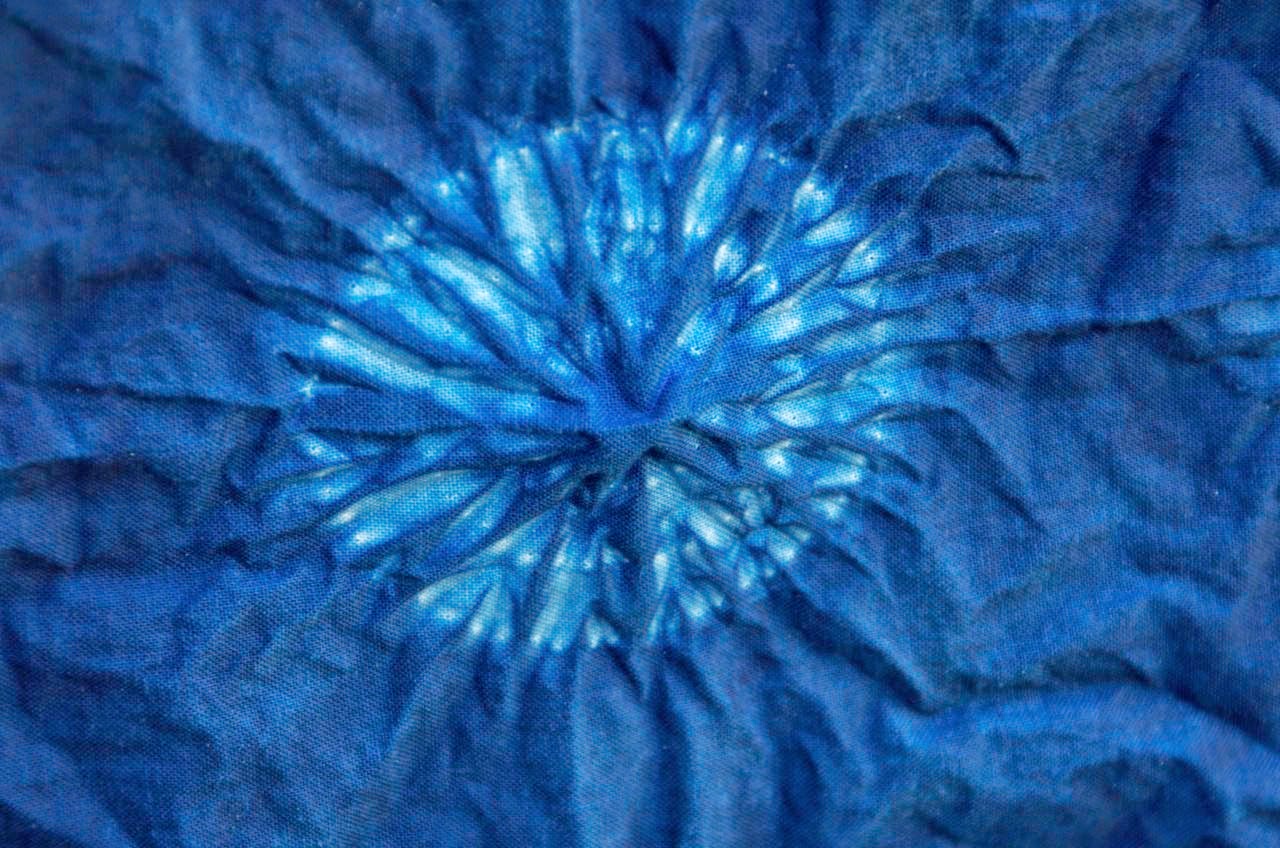Today I'll continue my discussion of techniques from my most recent dyeing sessions. In mid-July, after more than two months of experimentation, I realized that I hadn't done any kumo (spiderweb) shibori, and I didn't want to end the summer without any samples in my stash.
Kumo shibori is the method closest to 1960s hippie tie-dyeing: fabric is gathered, and then thread is wound around the gathers to create patterns. For a step-by-step description of the process, with plenty of photos, try
this link to Art Threads. In my first experiment, I decided to compare circles in kumo shibori and in a stitched shibori similar to mokume (wood grain) shibori. On one piece of fabric, I stitched the outline of the circles, gathered the stitching, and then tied the kumo shibori knots:
 |
| Kumo shibori, after multiple dips and aeration |
For the other fabric, I made folds, stitched concentric rings of half circles, and then pulled up and gathered the stitches, in a variation of what is called the Japanese larch pattern (karamatsu shibori):
 |
| Karamatsu shibori variation, oxidizing after one of the early dips |
|
|
Here's the step-by-step revelation of what I saw as I untied the kumo shibori FQ:
 |
| Kumo threads removed, with the circles still gathered at the base |
 |
| Excitement! The first row of circles revealed! |
 |
| The entire piece unbound |
Compare and contrast with the same sized circles, but stitched in the karamatsu pattern:
Neat, huh? More to come!








Yes, it is neat! It is amazing how hardly any of the dye got through the kumo knots. I love that crisp contrast. Can't wait to see the next one!
ReplyDeletevery cool! I think I like these more than your random ones, but both are lovely!
ReplyDeleteAfter turning my nose up at kumo for ages (precisely because of the hippie association!) I'm now a fan. These are lovely - I do think the stitched version gives you more control - and you can try other shapes too (I have a triangle piece in my Etsy shop).
ReplyDeleteYour karamatsu is pretty but looks more like concentric circles rather than mokune. Maybe the stitching lined up too much or wasn't pulled tightly enough?
I agree about the stitching--I needed to try the random tying in order to appreciate the finessed approach. I also noticed with my stitched circles that I needed to start the binding closer to the outline stitches--I do have more blue than I'd like at the outer edges of the circles.
DeleteWhat I really love about the kumo shibori is the possibility for pictorial shapes. I did a couple of pieces with leaf images that I'll be writing about in a few days.
As for the karamatsu effort, yes, I didn't really achieve the mokume effect. I think you're right on both counts--that the stitching was probably lined up too evenly, and also I didn't get enough of a resist. I did pull the stitches pretty tightly, but the rows of stitching may have been a little too far apart.